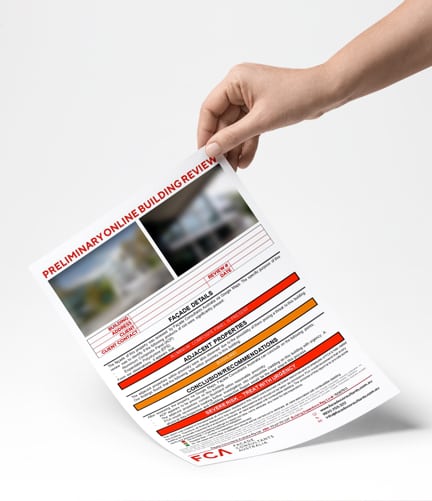Expanded Polystyrene (EPS) has become known for its role in smaller combustible cladding fires over the last 20 years due to its very flammable composition. Like ACP, this material is a very dangerous, flammable material that has many advantages as a building material despite this issue. This product became popular due to its lightweight and cost-effective advantages and hence its use in many different construction sectors. There are also many variations to this product, with many different appearances. This makes it a substantially harder product to identify on a building. There is still a lot of questions and unknowns amongst the public about what this product actually is, its composition and why it is dangerous. So, lets take a closer look at Expanded Polystyrene …

One of the many different versions of EPS Building Materials.
What is EPS?
Expanded Polystyrene, mostly referred to as EPS, comes in many different variations as different products for different applications. However, they all come under the category of Expanded Polystyrene due to the majority of their composition being constructed of Polystyrene. Polystyrene is a polymer made from styrene, a substance commercially manufactured from petroleum. This makes Polystyrene a thermoplastic substance, it melts when it is heated and spreads fire very quickly. It is classified as a ‘highly flammable’ or ‘easily ignited’ building product.
This product became a proven construction material that was particularly suited to withstanding the extremes of the climate in Australia. The advantages that EPS panel has as a building material includes:
- Excellent insulation properties – effective and durable thermal insulation
- Low maintenance
- Very lightweight and easy to install
- One of the most cost-effective insulation materials available
It is very similar to ACP in its advantages, however it is also similar to ACP in its ability to cause disasters. The Polystyrene core, the part that makes this material such a great insulator, is also highly flammable.
This material is used in many different areas in construction including cold room paneling, façade cladding and building features. As mentioned earlier, there are many different products constructed of EPS. The most popular being Sandwich Panel and Cladding materials. These can both appear in façade construction; however, sandwich panel is more popular in cold rooms and food processing plants due to its airtight, hygienic and insulating properties.
Sandwich Panel is typically constructed of two metal faces laminated to a polystyrene core. This is a similar make up to ACP, however it is typically a lot thicker, with a lot more flammable material being present. The Cladding version of EPS is simply EPS in sheets to be used as cladding in a similar style to FC Sheet. This is then often rendered and painted over.
The typical finishes on these materials make it a very hard material to identify. Often appearing in varying finishes and materials including metal, render and paint. This makes it ‘disguised’ as a material and is often overlooked as being block, concrete or a corrugated metal due to its appearance. This increases the threat this product holds and highlights the need to be thorough when managing the risks of EPS.

The composition of a EPS Insulated Sandwich Panel.
The Current Situation
The current situation that this product has put the construction and property management industry in is one of severe risk. The potential this product has to cause tragedies as a flammable, combustible material is often underestimated. This product is spread internationally and needs to be treated with the same urgency and thoroughness as the ACP issue should be getting treated with. Learn more about the Combustible Cladding issue here.
Sources

